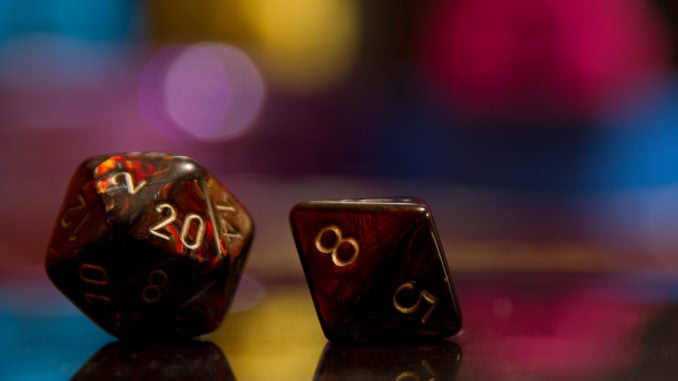Tal’Dorei Reborn Subclasses | See Our Archetype Overview
The new book from the Darington press, Tal’dorei Campaign Setting Reborn, has been unleashed on the masses. This supplement for Dungeons & Dragons 5th Edition is full of options for players. Heck, these guys released more subclasses than Wizards of the Coast does in four books! While not an official part of WotC, the Tal’dorei setting is close to the heart of the game. Thus, we’ve deemed it necessary to give a Tal’dorei Reborn Subclasses Overview so you can decide whether or not to give a third party a try at your table!

All Tal’dorei Campaign Setting Reborn Subclasses

Tal’dorei Campaign Setting Reborn offers players a total of 9 subclasses for 8 classes. These are all themed around Tal’dorei, but they are all completely reasonable in most campaign settings that you run. Be sure to get permission from your DM before making a character with any of these subclasses.
Barbarian
Path of the Juggernaut
The path of the Juggernaut is a power fantasy archetype, formatted around plowing through your enemies with sheer muscle. You gain the ability to easily push enemies around with every strike, and have surprisingly good defensive passives. You are hard to move yourself, and you can’t be knocked prone while in your strongest version of yourself. You can put yourself in a stance to nullify disadvantage on attacks against you, in return for disadvantage on attacks yourself. And you can even follow-up on pushing enemies around! This is a defensive archetype with great support for Rogues in the party; a good tag-team.
Bard
College of Tragedy
This is a surprisingly complex bard archetype, themed around tragic plays such as Othello or Romeo and Julliet. The flavor is dripping, and even bleeds into the abilities of the class, as your enemies breath a tragic soliloquy before dying while under your debuffs. You can alter fate to your advantage, at the cost of your future being grim. And you laugh with critical failures, as they grant you Bardic Inspiration right back. For the most unlucky players, and unlucky parties, this archetype is most definitely for you.
Cleric
Blood Domain
The power of sacrifice is the most ancient of divine fonts, and the blood domain focuses on that. With a debuff-heavy spell list, this cleric is a battlefield menace. You deal high damage with spells and weapons alike, and can freely regenerate spell slots at the cost of health. You can even form an aura of damage and anti-heal. That’s not to say this is a strictly offensive archetype. Your Channel Divinity can be used to see through the senses of a target of your choice, or even used for Dominate Monster with a focus on espionage and trickery. This is a legitimately strong Cleric that hurts.
Moon Domain
The Moon domain channels the celestial power of the Moon for power. This cleric’s main gimmick is spending Channel Divinity to be able to concentrate on two illusions at the same time. They make use of their power to create powerful Wisdom saving throw buffs, buff allies with advantage on attack rolls, and create horrifying situations for enemies using their Eclipse of Ill Omen. While not as bluntly powerful as the Blood Domain, the Moon Domain can weave their environment to their advantage.
Druid
Circle of the Blighted
The Circle of the Blighted is an all-rounder Druid with a focus on summoning. The druid can apply a patch of land which is difficult to cross and debuffs enemies to make them take more damage. This land can spawn saplings that can hinder enemies. Eventually, all of your summons are tankier and can even explode! This is also one of the few subclasses to grant you hard bonuses to AC, making them decent on offense. This is a great option, though is reliant on short rests to make them extremely powerful.
Monk
Way of the Cobalt Soul
The Cobalt Soul are legendary for fans of Critical Role, and these Monks use their knowledge of everything to aid them in combat. Rather than grant pure advantages on attacks or mobility, these monks can learn everything about a creature via analysis. Then, they can gather information with decisive strikes and react to misses with a swift punch. Their strengths come from spending Ki points to apply vulnerabilities or regain lost reactions. This monk lacks pure offensive or defensive power, instead being one of the only Monk options that are pretty heavy on utility. A fun choice for a traveling warrior.
Paladin
Oath of the Open Sea
Worship of sea gods grants a Paladin great and mysterious powers, making for great guards of the ocean. By embracing the freedom of exploration and water, these Paladins get aggressive spells with decent range like Call Lightning and defensive spells to help creatures escape. Their channel divinity allows for combat control with mist or shoves. Their Aura is anti-restrain, making it hard to keep a party with this paladin down. Finally, they can channel the waves to shove a creature all over a fight. An awfully potent build for someone good with their reactions. However, it can be a bit resource-intensive, and will require good knowledge of forced movement rules.
Sorcerer
Runechild
The Runechild’s magic expresses itself through runes that imprint themselves across a mage’s body. These runes are used to cast magic, essentially giving you another reason to spend Sorcery Points. With a support-heavy spell list, this Sorcerer can spend runes to block damage for themselves or allies. They can also spend runes to gain advantage on saves and skill checks, or to reveal hidden magic. Eventually, you can use the runes very aggressively by dealing force damage instead of normal damage, and even forcing creatures to have disadvantage on saves. This archetype is reliant on spending and regaining sorcery points, and requires a mastery of the Sorcerer’s class systems to use to its full potential.
Wizard
Blood Magic
Channeling Blood Magic is, historically, a very dangerous but potent strategy for magical empowerment. As expected, a Blood Magic Wizard is no different. Being able to deal damage to themselves, the Wizard then can reroll dice, use their body as an Arcane Symbol, and even reflect damage onto their enemies. They get some weird healing abilities, and even can defend against non-magical attacks. Their real strengths come from their curses and the ability to take damage instead of spending money, making them a bit overwhelming for new DMs. This is an incredible archetype for creative people, but should get a DM pass-through before use.
Wrapping Up The Tal’dorei Campaign Setting Subclass Overview
While the Tal’dorei subclasses may be a bit different from what Wizards offer, they are far from uninteresting or poorly balanced. In fact, as long as your DM allows it, they can stand side-by-side with standard archetypes in their class. If you’re digging for new options for every single campaign, this is definitely a place to look!






